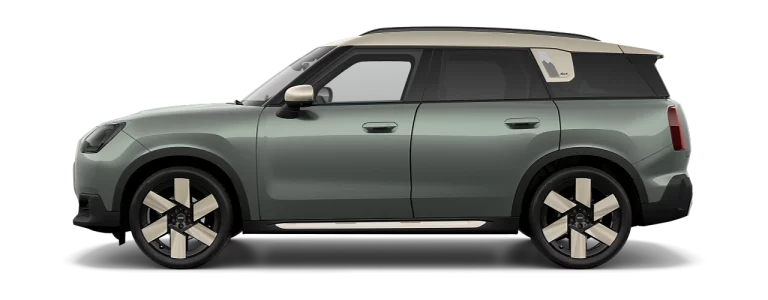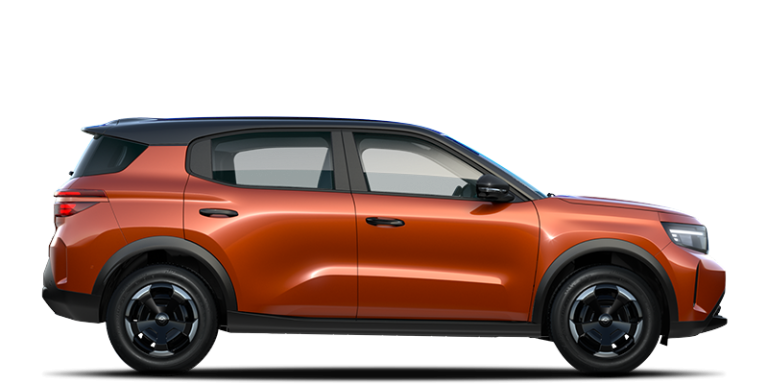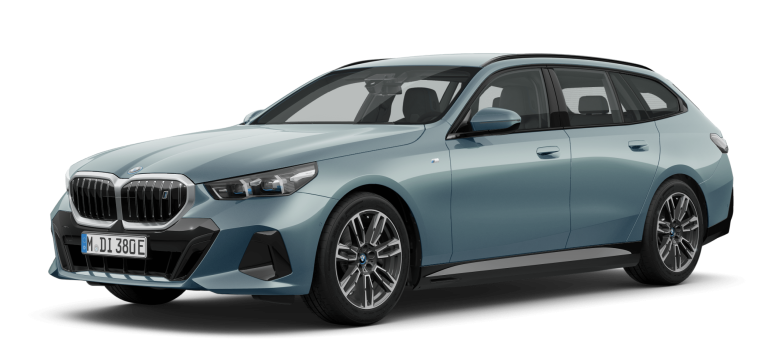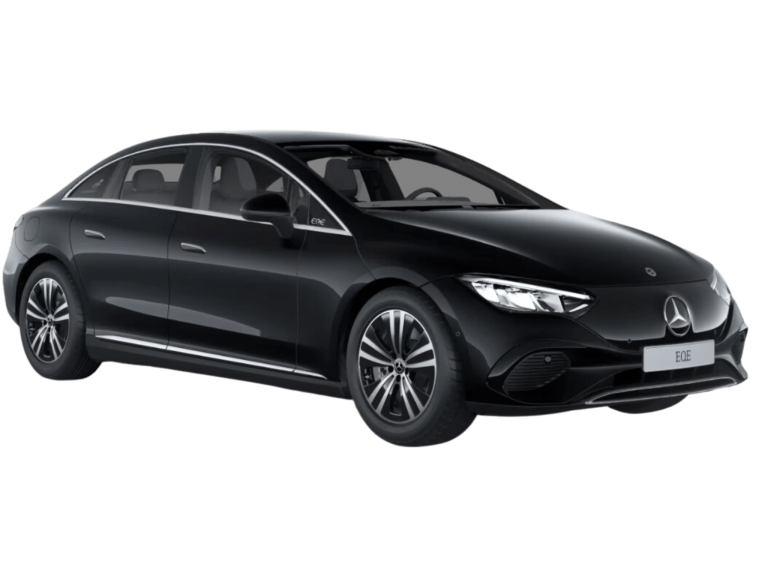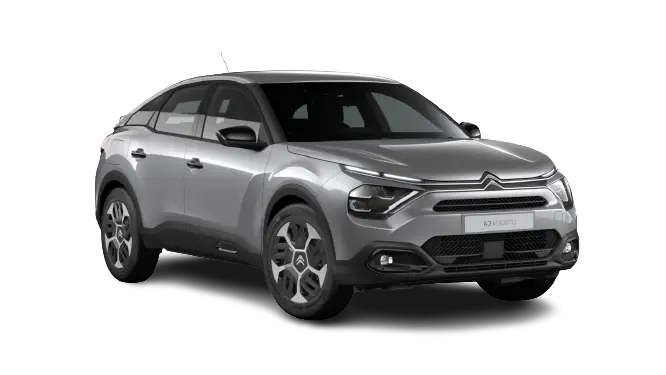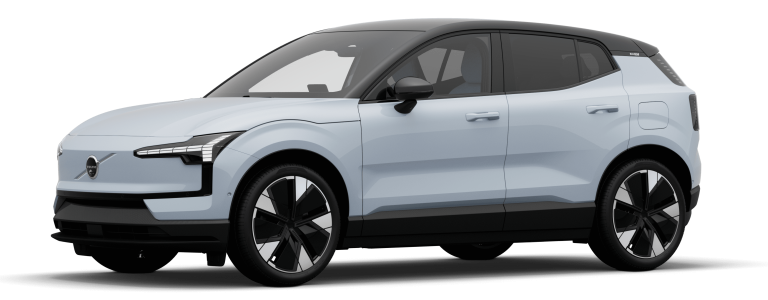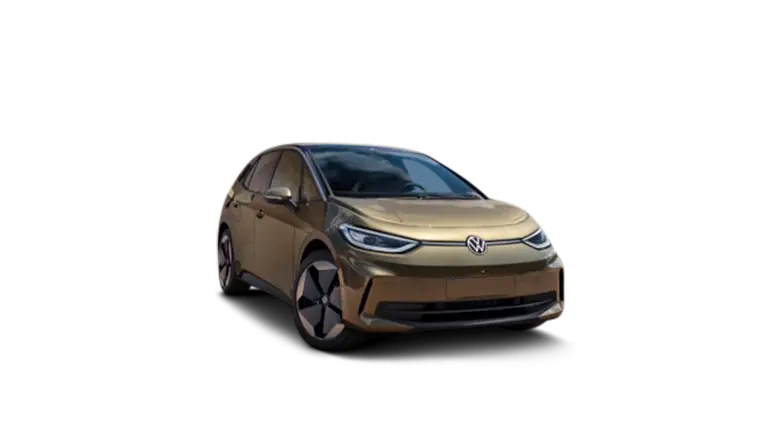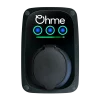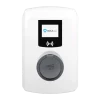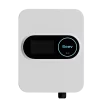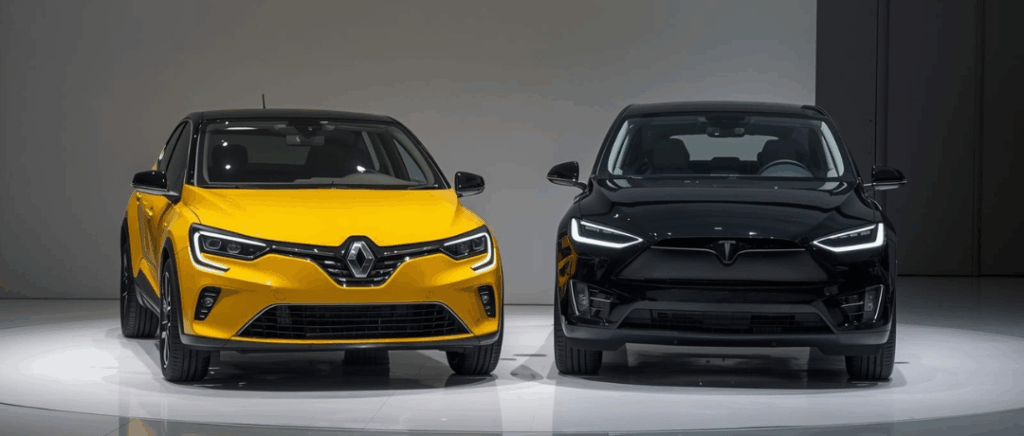A bold design, but more consensual than the combustion-powered C-HR
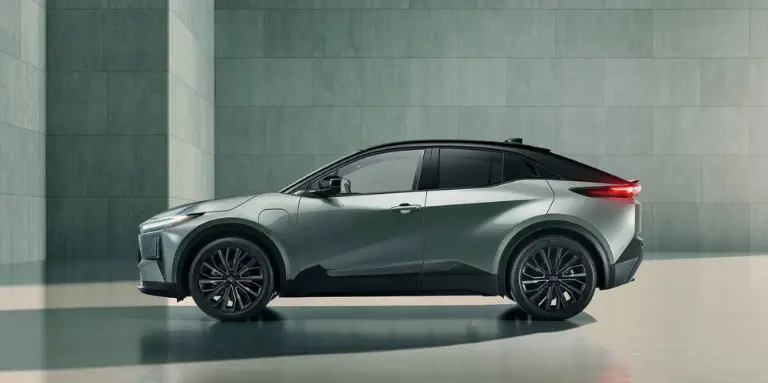
The new Toyota C-HR+ marks a bold evolution in the design of the Japanese brand's electric SUVs. While retaining the spirit of the combustion-powered C-HR, this electric 100% model takes a more consensual approach, without sacrificing its distinctive character. Toyota has succeeded in modernising the lines of its best-seller while drawing inspiration from the bZ concept, creating a vehicle that stands out in the compact electric SUV segment.
The C-HR+ stands out for :
- A revamped SUV-coupe profile, combining elegance and performance aerodynamics
- A more monolithic silhouette, in line with current market trends
- Futuristic design elements, such as a continuous strip of light at the rear
- An exclusive front bumper and a redesigned radiator grille, affirming its electric identity
This new electric Toyota SUV, due in late 2025, is positioned as a serious contender in the electric C-SUV segment, aiming to rival models such as the Peugeot e-3008. With its bold yet more accessible design, the C-HR+ embodies Toyota's vision for the future of electric mobility, combining innovative styling with enhanced practicality.
Modernised lines inspired by the Toyota bZ concept
The new Toyota C-HR+ electric SUV (2025) boasts a bold design that marks an evolution from its internal combustion counterpart, while taking inspiration from the Toyota bZ concept presented in 2022. This electric vehicle has a sleeker, more aerodynamic silhouette, without losing its distinctive character:
- The front end features slim C-shaped headlamps linked by a thin black band, echoing the design of the bZ concept.
- The profile adopts the C-HR's characteristic cutaway roofline, but with a more fluid and less complex approach than the internal combustion version.
- The rear features an integrated spoiler and slim horizontal lights linked by a continuous strip of light, a signature of the brand's electric models.
This Toyota electric SUV retains the innovative spirit of the C-HR while offering a more consensual design that is likely to appeal to a wide audience. The sculpted lines and attention to aerodynamics demonstrate Toyota's commitment to energy efficiency, a crucial aspect of a modern electric vehicle.
A compact SUV with a futuristic look
The new Toyota C-HR+ stands out for its bold design that combines futurism and elegance. This compact electric SUV boasts a sculpted silhouette that combines modernity and aerodynamic performance, while retaining the characteristic SUV-coupe profile of its predecessor. Although more consensual than the combustion-powered C-HR, the C-HR+ has a strong and distinctive visual identity:
- A redesigned front end with an exclusive bumper and slimmer headlights
- A cut roofline that doesn't impact on interior space
- The rear features a sloping rear window and integrated spoiler
- A sleeker, less complex design than its thermal counterpart
Toyota has succeeded in creating an electric vehicle that is both eye-catching and true to the brand's DNA. The C-HR+ is thus positioned as a serious contender in the compact electric SUV market, ready to rival models such as the Peugeot e-3008.
Converting your fleet to electric: the complete guide
Roominess: Roomier than a C-HR, but can it compete with the Peugeot e-3008?
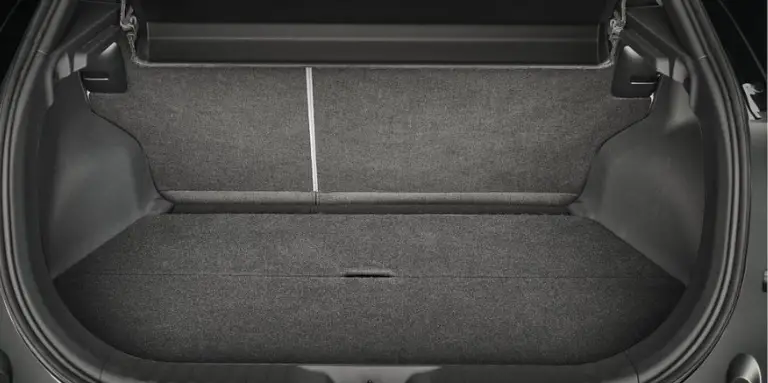
The electric Toyota C-HR+ of 2025 marks a clear improvement on its hybrid predecessor in terms of interior space. With an optimised wheelbase of 2.75 metres, it offers more space for rear passengers, reducing the claustrophobic effect thanks to better management of interior volumes.
Its boot, now increased to 416 litres with a modular double floor, is more versatile than ever, well beyond the limits of the previous model.
However, the C-HR+ will have to prove itself against the Peugeot e-3008. The electric SUV from Peugeot electric offers an impressive boot volume of 588 litres and top-of-the-range finishes that reinforce its premium appeal. Despite average rear-seat space, the e-3008 remains a formidable competitor thanks to its generous dimensions and optimised comfort.
Optimised wheelbase for greater comfort
The new electric Toyota C-HR+ marks a clear improvement on its hybrid predecessor in terms of interior space. With its wheelbase extended to 2.75 metres, this SUV coupé now offers :
- More legroom for rear passengers
- More generous headroom, reducing the claustrophobic effect
- A boot volume of 416 litres, more practical for long journeys
This optimisation of interior space brings the C-HR+ closer to the standards of its category, particularly when compared with the Peugeot e-3008. The available panoramic roof enhances the feeling of space and light, making up for one of the main criticisms of the previous model.
However, despite these improvements, the C-HR+ remains compact at 4.52 metres in length, which could put it at a disadvantage against some of the segment's more spacious rivals.
Increased boot space
The Toyota C-HR+, while retaining its compact and dynamic design, marks a clear improvement in terms of load capacity compared with its hybrid predecessor. Here's what you need to remember:
- A significant increase in volume: the boot of the C-HR+ now has a capacity of 416 litres, compared with 310 to 388 litres for the previous hybrid model. This increase in boot space meets the expectations of users looking for a practical and versatile electric SUV.
- Greater modularity: thanks to a longer wheelbase (2.75 m, 11 cm longer than the C-HR hybrid), the C-HR+ not only offers more generous rear space, but also better optimisation of the boot. This makes it better suited to family needs or long journeys with luggage.
- Competitive edge: Although the C-HR+ has made significant progress, it still lags behind the Peugeot e-3008, which boasts a boot capacity of up to 588 litres. The latter clearly dominates in terms of load capacity, which could be a deciding factor for buyers looking for maximum space.
In short, while the Toyota C-HR+ is a clear improvement on its predecessor, it will have to rely on other strengths to compete fully with models like the Peugeot e-3008 in this highly competitive category.
Comparison with the Peugeot e-3008
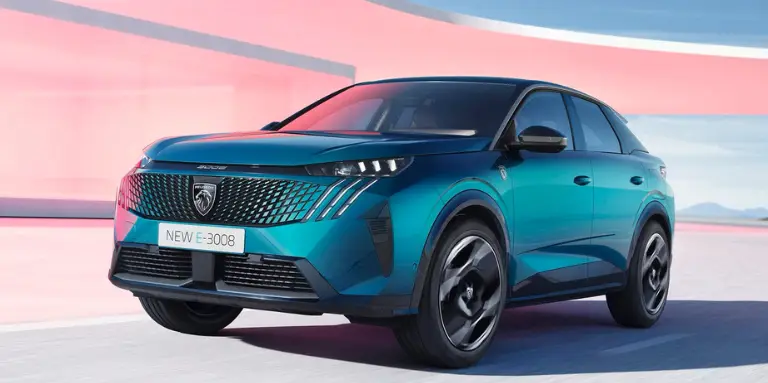
The new Toyota C-HR+ is positioned as a serious competitor to the Peugeot e-3008 in the electric SUV segment. Although roomier than its hybrid predecessor, the C-HR+ faces a major challenge from the e-3008 in terms of habitability:
- Dimensions: The C-HR+ is 4.52 m long with a wheelbase of 2.75 m, while the e-3008 is 4.54 m long. This minimal difference suggests that the interior space will be comparable.
- Rear space: The C-HR+ offers 90 cm between the front and rear seatbacks, promising greater comfort for rear passengers than the previous model.
- Boot space: At 416 litres, the C-HR+ still lags behind the 588 litres of the e-3008, a crucial point for families.
- Overall roominess: The C-HR+ boasts generous headroom and a panoramic roof, creating a feeling of spaciousness - an advantage over the e-3008.
Despite these improvements, the C-HR+ struggles to match the load volume of the e-3008. However, its modern interior design and luminosity could appeal to buyers who prefer on-board ambience rather than sheer load capacity.
Improved materials and finish: Toyota improves perceived quality
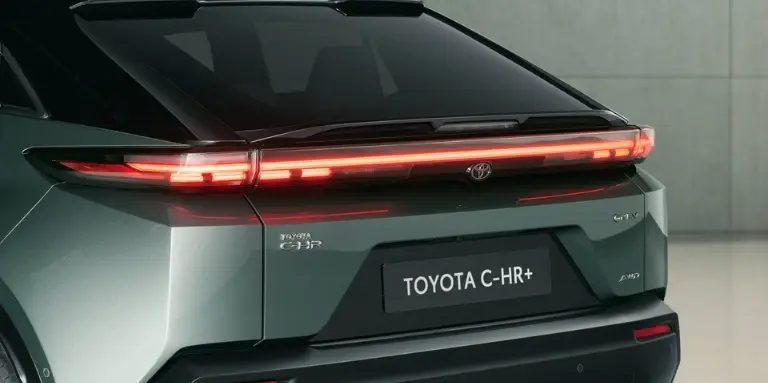
The new Toyota C-HR+, scheduled for launch at the end of 2025, marks a significant evolution in Toyota's approach to perceived quality and interior finishes. While the Japanese brand was sometimes criticised for its functional but unrefined interiors, this new electric SUV seems to be taking a decisive turn towards premium. This move upmarket is particularly evident in the choice of materials, the layout of the cabin and the on-board technologies.
Toyota seems to have taken on board the growing expectations of European consumers, particularly in the face of competitors such as the Peugeot e-3008, which is renowned for its sophisticated interior. Let's take a closer look at how Toyota enhances perceived quality in the C-HR+ and how it positions itself against its French rival.
Upmarket interior
The Toyota C-HR+ marks a clear evolution in terms of perceived quality, aligning itself more closely with premium segment standards. The interior benefits from particular attention to detail and finish, reflecting Toyota's ambition to rival competitors such as the Peugeot e-3008. Here are the key points of this move upmarket:
- Premium materials: The interior is enhanced by the use of top-of-the-range materials, creating a refined, modern ambience.
- Sophisticated ambient lighting: A sophisticated lighting system enhances the atmosphere, contributing to a more immersive driving experience.
- Redesigned ergonomics: The cockpit, inspired by the bZ4XIt features an innovative layout with a low steering wheel and a digital instrument panel positioned in the driver's direct field of vision.
- Greater comfort: the generous 2,750 mm wheelbase ensures optimum interior space, particularly between the front and rear seats.
- Technological equipment: The integration of wireless chargers, USB ports and rear air-conditioning controls testifies to the attention paid to the comfort of all passengers.
This interior redesign positions the C-HR+ as a serious contender in the compact electric SUV segment, offering a level of finish and equipment that meets the expectations of demanding customers.
Touch screen and on-board technologies
The Toyota C-HR+ takes a quantum leap forward in terms of on-board technology, raising the bar in the compact electric SUV segment. At the heart of this technological evolution is an impressive 14-inch touchscreen, which is standard on all trim levels. This large multimedia screen not only offers an intuitive interface, it also incorporates a navigation system specifically optimised for electric vehicles. This intelligent feature calculates routes based on available charging points, adapting in real time to the vehicle's state of charge. battery and theautonomy remaining.
The user experience is further enhanced by the MyToyota app, allowing owners to remotely manage key aspects of their vehicle, such as charge level, recharge time, range and usage data. This advanced connectivity is accompanied by a comprehensive suite of driving aids, including Toyota Safety Sense, Blind Spot Sensor, Adaptive High Beam and Park Assist.
Toyota has thought of everything for passenger comfort:
- Two front wireless charging zones
- USB-C ports on rear
- Air conditioning controls for rear passengers
- Panoramic roof flooding the cabin with natural light
These features, combined with high-quality materials and stylish ambient lighting, help to create a premium and technological atmosphere, positioning the C-HR+ as a serious contender in its class.
Comparison with the e-3008: who wins?
The duel between the new Toyota C-HR+ and the Peugeot e-3008 promises to be a close one in the compact electric SUV segment. The C-HR+ stands out for its bold SUV-coupe design and impressive performance, particularly in its 343 bhp AWD version capable of accelerating from 0 to 100 km/h in 5.2 seconds. In terms of dimensions, the e-3008 takes the lead with a length that is 18 cm longer and a height that is 8.3 cm greater, potentially offering more interior space.
The C-HR+ focuses on technology, with a 14-inch multimedia screen standard on all trim levels, while the e-3008 offers a more advanced digital instrument cluster.
In terms of range, the two vehicles should offer similar performance, with the C-HR+ offering 57.7 kWh and 77 kWh batteries.
In terms of perceived quality, Toyota has made significant progress with the C-HR+ :
- Improved interior finish and assemblies
- Materials that are pleasant to the touch
- Use of recycled plastics and eco-friendly synthetic leather
- Customisable ambient lighting with 64 colour options
Although the e-3008 has an established reputation for quality, the C-HR+ seems to have closed the gap. The final choice will depend on individual preferences in terms of design, performance and specific equipment.
Performance: Toyota's most powerful electric SUV?

The Toyota C-HR+ marks a turning point in the Japanese manufacturer's electric range, establishing itself as the most efficient SUV ever produced by Toyota. Thanks to a variety of engines and cutting-edge technology, this model promises impressive figures that rival segment leaders such as the Peugeot e-3008.
Available engines and range
The new Toyota C-HR+ is positioned as a serious contender in the electric SUV market, with a wide range of engines and impressive performance. Toyota offers three engine options for this model:
- An entry-level front-wheel-drive version with a 57.7 kWh battery, developing 167 bhp (123 kW)
- An intermediate version, also with front-wheel drive, equipped with a larger 77 kWh battery, offering 224 bhp (165 kW).
- A top-of-the-range version with all-wheel drive (AWD) and a 77 kWh battery, delivering an impressive 343 bhp (252 kW).
This latest configuration makes the C-HR+ one of Toyota's most powerful models in Europe, capable of accelerating from 0 to 100 km/h in just 5.2 seconds.1. In terms of range, Toyota has announced up to 600 km in the WLTP cycle for the version equipped with the 77 kWh battery, making the C-HR+ one of the most enduring electric SUVs in its category.
To maximise efficiency, Toyota has worked particularly hard on the vehicle's aerodynamics, with a streamlined silhouette and features such as the roof spoiler and ducktail rear. In addition, the C-HR+ benefits from a battery pre-conditioning function to improve charging performance in a variety of conditions.
A sports version in the pipeline?
Although Toyota has not yet officially announced a sports version of the C-HR+, there are a number of clues pointing to its development. The Japanese manufacturer has already tested a racing version of the C-HR at the 24 Hours of Nürburgring, finishing 3rd in its class. This experience could serve as the basis for a future sports version of the electric C-HR+.
What's more, with its most powerful engine of 343 bhp in all-wheel drive, the C-HR+ is already one of Toyota's most powerful models in Europe.1. This impressive power, coupled with acceleration from 0 to 100 km/h in just 5.2 seconds, provides a solid basis for the development of an even sportier version.
Toyota could exploit this potential by :
- Further optimising the vehicle's aerodynamic design
- Fine-tuning the suspension settings for even more dynamic handling
- Incorporating competition-inspired design elements, like the GR Sport finish
If such a version sees the light of day, it could rival the sporty electric SUVs in the segment, offering dynamic driving enthusiasts an attractive electric alternative in the Toyota range.
Charging and efficiency: what is the Toyota platform worth?
The e-TNGA platform of the Toyota C-HR+ promises remarkable efficiency, with a range of up to 600 km for the version equipped with the 77 kWh battery. This performance is made possible by a number of innovations:
- Optimised aerodynamics, with a streamlined silhouette, a roof spoiler and a ducktail tail for fluid airflow
- A battery pre-conditioning function, improving charging performance in a variety of conditions
- An energy-efficient heat pump for the air conditioning system
When it comes to charging, the C-HR+ offers :
- An 11 kW on-board charger as standard, with a 22 kW option on higher trim levels
- Fast DC charging capacity of up to 150 kW
These characteristics place the C-HR+ in a competitive position against its rivals, notably the Peugeot e-3008. However, it should be noted that the range claimed is subject to certification and could be less in real-life conditions, as is often the case with electric vehicles.
How much does the Toyota C-HR+ cost?
The electric Toyota C-HR+, expected in France at the end of 2025, is already attracting a great deal of interest. Although official prices have yet to be revealed, here's what we can anticipate based on market trends and the model's features:
- Premium positioning: With a platform dedicated to electric vehicles (e-TNGA) and advanced technologies such as a range of up to 600 km WLTP, the C-HR+ should be competitive with electric SUVs such as the Peugeot e-3008.
- Price estimate: Base versions could start at around €40,000, while top-of-the-range configurations, equipped with the 77 kWh battery and offering up to 343 bhp, could top €50,000. This positioning reflects a strategy aimed at competing directly with models such as the Skoda Enyaq or the Renault Scénic electric.
- Equipment and trim : Higher trim levels are likely to include options such as a 22 kW on-board charger and advanced driver assistance technologies, justifying a higher price tag.
In short, the Toyota C-HR+ promises attractive value for money for a compact electric SUV, while targeting a premium segment where it will have to contend with well-established rivals such as the Peugeot e-3008.
Summary table
| Category | Details |
|---|---|
| Model | Toyota C-HR+ |
| Type | SUV 100 % electric |
| Design | Inspired by the Toyota bZ concept, SUV-coupe, aerodynamic profile, rear light strip, exclusive bumper |
| Dimensions | 4.52 m long, 2.75 m wheelbase |
| Habitability | More rear space, 416 L boot (compared with 588 L for the Peugeot e-3008) |
| Engines | 167 bhp (57.7 kWh, front-wheel drive) | 224 bhp (77 kWh, front-wheel drive) | 343 bhp (77 kWh, AWD) |
| Range (WLTP) | Up to 600 km (77 kWh battery) |
| Performance | 0 to 100 km/h in 5.2 sec (AWD version) |
| Technologies | 14'' touch screen, MyToyota App, Toyota Safety Sense, wireless charging, USB-C ports, rear air conditioning |
| Finishes | Premium materials, 64-colour mood lighting, recycled plastics, synthetic leather |
| Refill | DC 150 kW fast charge, 11 kW on-board charger (22 kW option) |
| Main competitor | Peugeot e-3008 |
| Availability | End of 2025 in France |
| Estimated price | Not communicated, but expected to be within the range of electric C-SUVs |
Conclusion
The Toyota C-HR+ marks an important step in the electrification of the Toyota range, establishing itself as a serious contender in the compact electric SUV market. With a bold design, improved cabin space and promising electric performance, it aims to compete directly with established models such as the Peugeot e-3008.
Although the C-HR+ has improved significantly on its predecessor in terms of interior space and perceived quality, it still lags behind the e-3008 in terms of boot space. However, its modern interior design, on-board technologies and competitive range could appeal to customers looking for an electric SUV that combines style, comfort and performance.
Do you want to go electric? Beev can help you make the transition to greener, more sustainable mobility. Whether you're an individual looking for a installation of home charging points or a professional requiring installation of recharging points for professionalswe are simplifying theinstallation of a recharging pointby offering you tailor-made solutions to meet your specific needs. So go ahead, install a charging point and set yourself apart from the competition.
You would like toto electric?
Beev offers multi-brand 100% electric vehicles at the best prices, as well as recharging solutions.




